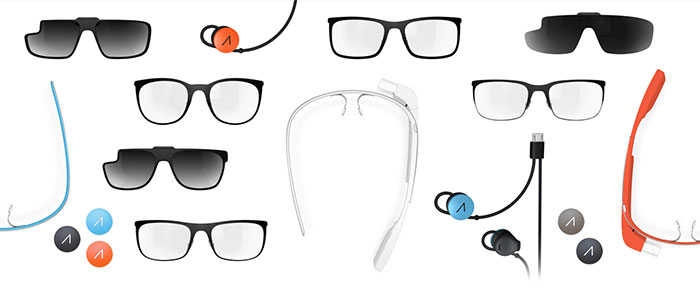
Our society is on the go...and to match a fast paced life style, technology has to keep up. Thus, the impetus for a unique, wearable piece of technology that customizes your every need was developed: Google glasses. The idea of wearing a computer on your head is not new...Steve Mann invented a form of Digital Eye Glass in the 1980s. The original intent of this invention was to act as a camera to record, and as a computer monitor .
Google Glass, as it is referred to, takes that intent a step beyond by adding features of computer design integrated music, fitness, cycling, texting, golfing, navigation and more. It has been released in a limited “Explore” version selling for $1500.00 US Dollars. They intend to release a public version to the market as well.
This invention has been used in the medical field to help medical doctors assist in remote instructional surgeries and teaching techniques. In ophthalmic medicine, it has an expansive role in educating doctors and students about the retina by allowing a view through an Indirect Ophthalmoscope at retinal tissue. The technology is also being used to integrate medical health records in clinics and hospitals.
The upside to this wearable technology is its applications in the fields of technology, medicine, communication, filming, sports and recreation. Furthermore, the basic design has been embellished by fashion designer eyewear to give the glass a more enhanced look.
The downside is the privacy concerns, and health and vision concerns. Privacy can be violated by recording without consent, and incorporating facial recognition features. Safety issues emerge when the device is worn during driving........drivers in several states have been fined. There are also vision concerns. The Google Glass optometrist from Harvard has warned about eyestrain if the glasses are used improperly or for too long. The side effects of eyestrain and headaches have not been widely experienced.
From a vision standpoint, the ergonomics could be improved or altered. The current configuration, if used too long,causes the eye to focus in a way the eye was not designed to. With the display in the upper temporal quadrant, Google’s design was for quick, periodic viewing. Eyestrain and headache can occur with extended viewing. The unwanted side effect evolves from the eye diverging or turning out while reading. The eye’s original design was to turn in or converge when reading, for this is the normal comfortable posture for the eye. The eye does not want to look up and out for extended reading periods, and those muscles simply were not designed for that activity.
Albert Einstein once said, “Imagination is more important than knowledge.” So once Google Glass, or other wearable technology, advances and simplifies the ergonomics issues, going one more step into the future of wearable technology, then the sky is virtually the limit and creativity and imagination will guide the next advancement.
For more detailed information on Google Glass, visit google.com.
The content of this blog cannot be reproduced or duplicated without the express written consent of Eye IQ.
 Just like adults, children need to have their eyes examined. This need begins at birth and continues through adulthood.Following are common recommendat...
Just like adults, children need to have their eyes examined. This need begins at birth and continues through adulthood.Following are common recommendat...


